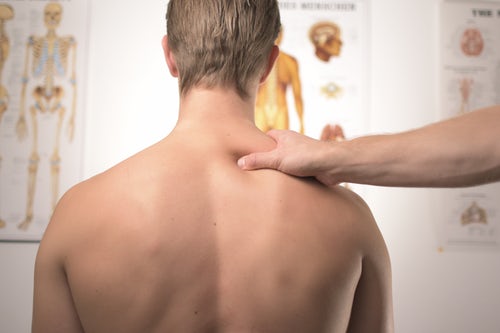nalco group
bone, muscle & joint pain physio
BOOK NOW / WHATSAPP ABOUT YOUR PAIN OR INJURY
- ORCHARD 400 Orchard Road #12-12 Singapore 238875
- TAMPINES 9 Tampines Grande #01-20 Singapore 528735
- SERANGOON 265 Serangoon Central Drive #04-269 Singapore 550265
Home > Blog > Ergonomics > Do You Have Repetitive Strain Injuries?
Do You Have Repetitive Strain Injuries?

Repetitive strain injuries (RSI) is a general term that is also used interchangeably with Cumulative Trauma Disorder (CTD), overuse syndrome and Workplace Musculoskeletal Disorder (WMD) - generally they refer to health problems and pains that are caused by: overuse, under-rest and/or misuse of
- muscles
- tendons
- ligaments
- nerves
Repetitive strain injuries isn't like a "big" or "strong" traumatic accident, like injury from a fall; but it's more like micro, small injuries, repeatedly. Repetitive strain injuries are a very common form of workplace/occupational illness/ill-health, and some of these RSIs can be so severe that it can:
- the patient may need one or more corrective surgeries
- the patient may need prolonged physiotherapy and hand therapy
- the patient may face prolonged or permanent disability
Repetitive strain injury unfortunately also isn't just limited to a particular type of job, though the risks of getting it is much higher in jobs and occupations that have more physical and repetitive type of work, such as:
- working at assembly line
- working in food processing
- working in cashier/counter
- working in prolonged sitting (desk/driver/etc)
- working with multiple screens
- etc
And in most cases, repetitive strain injuries takes time to accumulate, and hence most of the patients present with repetitive strain injuries beginning 40+ years of age.
causes and aggravating factors of repetitive strain injuries
- Repetitive Work ie doing the same job and motions repeatedly and especially without sufficient rest time to recover from the repeated load and strain.
- Insufficient Break/Rest ie not taking enough time to rest the tired muscles, ligaments, tendons and nerves. Refer to micro-breaks article.
- Face Pace ie having to work quickly. This is aggravated if there is awkward posture and insufficient rest/break.
- Forceful / Effortful Motions ie participating in activities/work that requires much effort, strength and load to complete the task eg lifting items, shifting items, loading/packing items, climbing. Also consider when one has to push heavy doors/gates, heavy bags/purses, pounding fingers heavily on keyboard, hammering/wire-cutting/wood-works etc.
- Awkward/Fixed Posture Or Position ie working in a fixed and/or awkward position eg working on something high up (overhead such as lighting/wiring/filing/etc( or low-down (reach down, squatting/half squat), lifting improperly, twisting of body etc
- Excessive Glare / Insufficient Lighting ie working in environments that are insufficiently lit or too bright can lead to eye muscle fatigue/strain. Includes drivers/people who drive a lot at night (bright lights) or day time where there can be a lot of glare/reflections.
- Excessive Vibration such as in the regular use of power drills, jackhammers, hammering, etc
What are the signs & symptoms of repetitive strain injuries?
Unfortunately repetitive strain injuries can affect any parts of our body, but the most commonly affected body parts tend to be parts that we use more often eg:
- fingers and thumbs
- hands, wrists, forearms, elbows
- shoulders
- back and neck
The symptoms range from:
- tenderness
- ache/aching
- swelling
- tingling/numbness
- decreased/loss of joint movement
- muscle weakness/difficulty moving
- spasms
And these repetitive strain injury symptoms can happen anytime at work, after work, before work, at home, before, during or after any tasks/activities. That being said, most patients experience their first repetitive strain injury symptom when at rest/home, eg a patient may have worked as usual that day and only felt the pain/strain later that night or next day with a painful neck or back.
Higher repetitive strain injury risk jobs are:
- food/bag/meat packers
- seamstress/garment workers
- assembly line worker
- airport work with lots of baggage lifting and loading
- hand tool operator
- people who sit/drive for long periods > 6-10 hours per day
- etc
Repetitive strain injury symptoms can be very very mild...but they can also be so severe that patients may have difficulty or inability to:
- unbutton/unzip clothing for dressing
- turning on or off taps for showering, washing
- holding onto toothbrush or even opening toothpaste tubes
- pick up coins or handle buttons
It can be very debilitating and frustrating to be unable or have difficulty with the most simple of task.
What are the most common repetitive strain injuries?

- De Quervain’s tenosynovitis also known as washerwoman’s sprain or radial styloid tenosynovitis refers to the inflammation and swelling of tendons in the wrist that control the thumb.
- Tennis Elbow, a painful condition on the outer part of the elbow that most often develop even when one does not play tennis.
- Subacromial bursitis, commonly known as shoulder impingement syndrome. Usually caused by the subacromial bursa being compressed/pressed between the rotator cuff muscles and the
collarbone, with repeated overhead shoulder movements.
- Carpal tunnel syndrome (CTS) occurs when the median nerve in the wrist is compressed and squeezed in the carpal tunnel. Patients usually experience
numbness, tingling and weakness in the thumb, index finger, middle finger
and inner side of ring finger. Carpal tunnel syndrome is more prevalent in people who
overuse their hands on piano or computer keyboards
- Hand-arm vibration syndrome, also known as Raynaud’s Phenomenon. Disorder
of blood vessels, usually in fingers or hands, which causes the
affected area to lose color and feel cold or painful.
- Golfer's Elbow, a painful repetitive strain injury that occurs on the inside part of the elbow, again, similar to tennis elbow, most patients do not play golf too.
- Thoracic outlet syndrome is a neurovascular (ie of the nerve and blood vessels) disorder that is the compression
of the nerves and blood vessels in the shoulder leading to numbness in
the fingers and weakening of the pulse. Patients typically experience pain anywhere from the shoulder to the tip of the finger in the affected side.
This condition is caused by compression of blood vessels from activities that pull the shoulder backwards and downwards eg carrying heavy bag packs (or school bags on one side of the shoulder) and repeated overhead motions such as stacking dishes, filing, products or supplies on a higher shelf.
